Objective Image Quality Analysis
There is a wide range of image quality testing applications and resources available today. One of our current favourites can be found over at Lagom. Detailed tests for everything from colour gradients to gamma calibration and pixel response are included along with a detailed guide to interpreting what you are seeing.Before we get onto how the NEC MultiSync 24WMGX3 performs in our tests though, it's worth going through some of the colour modes that are available on the display. There are eight modes in total and most of them appear to look OK – I prefer using the sRGB colour space and the good news is that this setting is very close to the MultiSync LCD2690WUXi's sRGB setting for the most part – we'll come to the areas where it doesn't match up later.
However, it's unfortunate but understandable that you're unable to manually adjust the colours in this mode – it is, after all, an international standard. For those that want to adjust colour, there are another seven presets available to you – the two we found the most useful were the two 'standard' settings. STD1 enables you to control most settings, but the contrast ratio optimiser and IV mode options are greyed out – in order to adjust these, you'll need to select STD2.
In addition to this, there are presets for text, photo, two for games and one more for movies. The text mode turns the brightness down and the default colour temperature setting is 5,000K – it's not to my personal tastes and I spend most of my day in a word processor, but those that find sRGB too much or just prefer a cooler colour temperature for word processing will probably find the text preset adequate.
The other modes are fairly self explanatory and aim to give better colour renditions in the target source materials. Unlike some of the monitors we've seen recently, these aren't bad but for the most part we found sRGB was more than adequate once we'd adjusted sharpness, contrast and brightness accordingly – the NEC MultiSync 24WMGX3's sRGB mode is well-configured and pretty accurate out of the box, so there's no need to spend a lot of time manually adjusting colour temperatures, saturation and gain.
Moving through the various scenarios on the Lagom LCD test page revealed that the AMVA panel used on the 24WMGX3 is a pretty good one – there are some minor niggles, but nothing that's going to cause concern for all but professional image editors requiring the best image quality available on the market. The MultiSync 24WMGX3 isn't targeted at that user group though and it's instead aimed at gamers and enthusiasts who want to do a bit of photo/video editing on the side.
The contrast test in particular was particularly pleasing with all eight colours almost matching our NEC MultiSync LCD2690WUXi that we use for comparison purposes perfectly – the 24WMGX3's darker ends of the eight colour scales weren't quite as dark as they were on the 2690WUXi, but they were pretty close. This could easily be put down to the fact that the 24WMGX3 is an appreciably brighter display with some colours looking much more vibrant (if a little less accurate) than what we the 2690 produces.
Despite this, the 24WMGX3 faired well in the black level test and almost matched the 2690 – box two was slightly more feint on the 24WMGX3, but not so much that it wasn't visible; box one wasn't visible on either display. However, NEC's latest monitor didn't fair so well in the white saturation test – box 253 was incredibly feint and we were unable to distinguish box 254 from the background at all on the 24WMGX3. The 2690, on the other hand, manages a near-perfect showing in thistest, with box 254 just about distinguishable.
In the gradient test, there was no visible banding on the 24WMGX3, but there was a slight pink tinge in the midtones. There was also some evidence of mild ghosting as well in some of the grey-to-grey ghosting tests, but they interestingly weren't apparent in the darker and lighter test scenarios. We also tested the display's input lag and it ended up around 15-20ms faster than the LCD2690WUXi, which is a good showing for the 24WMGX3.
Finally, we evaluated the display's viewing angles – this was where the first 24WMGX3 we received fell flat, because our first viewing angle test looked horrendous. It was more representative of a TN+Film panel than it was of something MVA-based – the red surface test shifted from pink to red with the monitor directly in front of us. Our viewing angle test that also targets gamma and sharpness also looked horrendous as well, with the top left hand corner of the display (and approximately one third of the total viewing area) suffered from colour inversion looking head on at the monitor, but interestingly it looked fine at about a 45 degree angle. At the time I joked that it made an ideal secondary monitor, because the viewing angles were awesome at approximately 45 degrees, but not so good head on.
Anyway, we fired up our second 24WMGX3 and quickly realised that there was a problem with the first – we didn't see anything like what we've just explained on the second display. Instead, the red surface was vibrant and solid, while the gamma/inversion test showed a more promising result as well, although there was a slight hint of colour shifting in both the top right and left corners. The purple, green and blue solid colour tests showed no signs of these problems though, just like the red solid colour test.

MSI MPG Velox 100R Chassis Review
October 14 2021 | 15:04


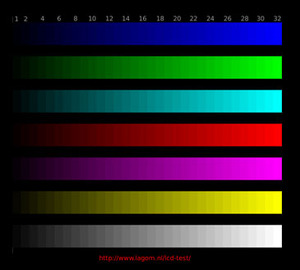
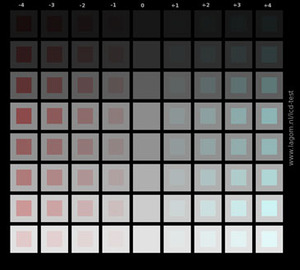
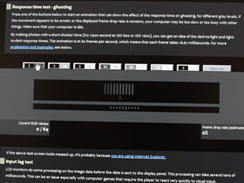
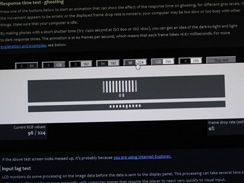
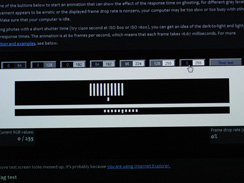







Want to comment? Please log in.